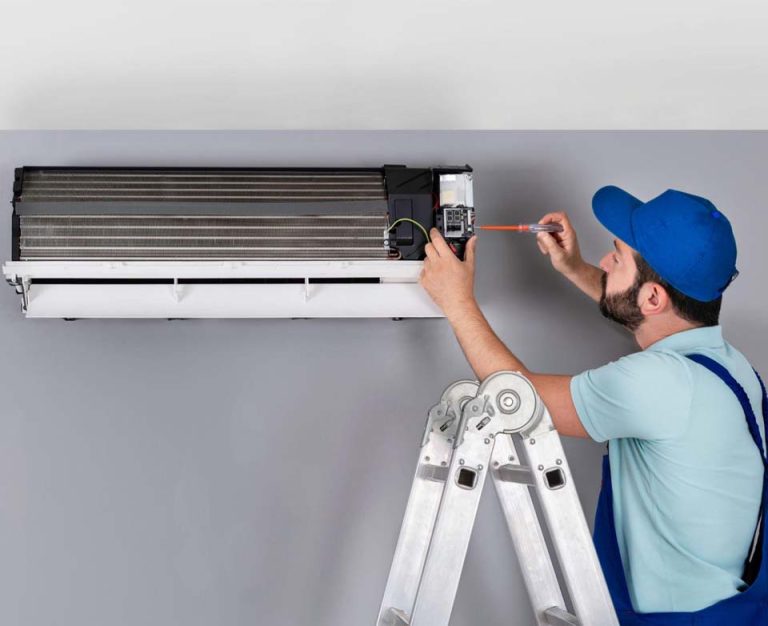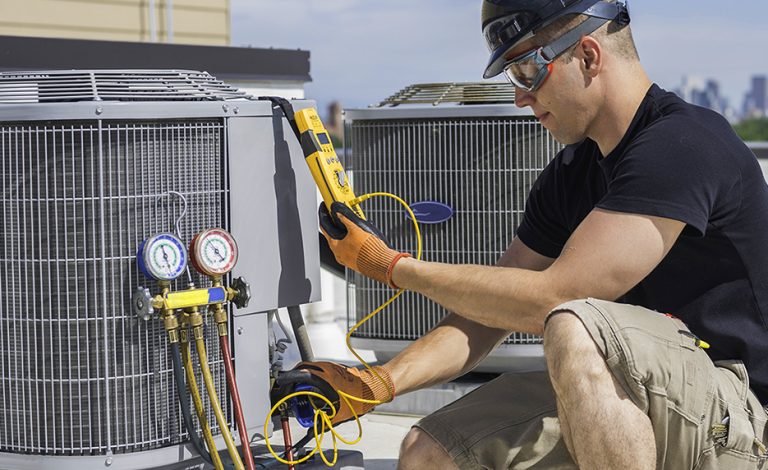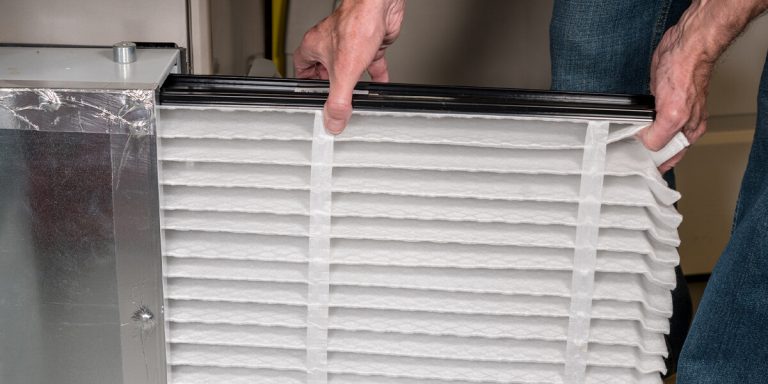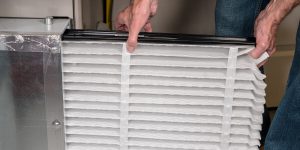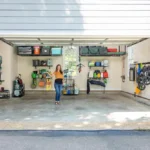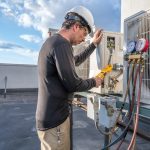As the temperatures rise, ensuring your home stays cool and comfortable becomes a top priority. However, maintaining the perfect indoor climate goes beyond just cranking up the air conditioning or relying on a fan. A well-rounded approach to cooling, coupled with regular maintenance, can drastically improve the comfort, efficiency, and sustainability of your living space. From energy-efficient cooling solutions to routine system upkeep, there are numerous strategies to keep your home cool, cozy, and cost-effective year-round.
In this article, we will explore practical steps to improve your home with cooling and maintenance, highlighting the importance of regular care and thoughtful upgrades. Whether you’re building a new home or looking to improve the efficiency of your current one, understanding these key strategies can make all the difference in your comfort and energy bills.
Understanding the Basics of Home Cooling
Before diving into specific techniques, it’s important to understand the various cooling options available for your home. The most common methods of cooling are air conditioning systems, fans, and passive cooling strategies like proper insulation and ventilation.
-
Air Conditioning: Air conditioners are the most common cooling solution for homes, offering both immediate relief and long-term comfort. From central air systems to split or window units, air conditioners are designed to lower the indoor temperature by removing heat from the air. While effective, they also consume a significant amount of energy, making maintenance crucial to keeping operating costs manageable.
-
Fans: Ceiling fans, box fans, and oscillating fans are often used in conjunction with air conditioning to circulate cool air and improve ventilation. They work by moving the air around, which can make the ambient temperature feel cooler. Fans are an energy-efficient way to supplement cooling efforts without significantly increasing electricity consumption.
-
Passive Cooling: Passive cooling refers to natural methods that can reduce heat buildup in your home. These include proper insulation, shading, and ventilation. Techniques such as installing reflective window films or ensuring adequate airflow through your home can greatly reduce reliance on mechanical cooling systems.
Effective Cooling Strategies for Your Home
To keep your home cool in the summer and enhance your overall indoor comfort, here are several strategies you can implement:
1. Upgrade to Energy-Efficient Cooling Systems
If your current cooling system is outdated or inefficient, upgrading to a newer, energy-efficient model can make a noticeable difference in both comfort and energy savings. Modern air conditioners are far more energy-efficient than older models, with many offering advanced features such as programmable thermostats and zoning capabilities. These features help ensure that you only cool the areas of your home that need it, reducing wasted energy.
For example, central air conditioning systems with Energy Star ratings consume significantly less power than their older counterparts, making them a smart choice for homeowners looking to save on energy bills. In addition, heat pump systems, which provide both cooling and heating, offer a versatile and energy-efficient solution for year-round comfort.
2. Seal Air Leaks and Improve Insulation
One of the most effective and affordable ways to improve the cooling in your home is by ensuring it is properly insulated and sealed. Gaps and cracks around windows, doors, and vents can allow cool air to escape and warm air to enter, making your air conditioner work harder. Adding weatherstripping or caulking around windows and doors can significantly reduce the amount of energy lost.
Furthermore, upgrading your insulation—especially in the attic and walls—helps to maintain consistent indoor temperatures. Insulation acts as a barrier that prevents heat from entering the home during hot weather and helps retain warmth during the winter. Proper insulation helps keep your cooling system from being overburdened, making it more efficient and lowering your energy bills.
3. Install Smart Thermostats
One of the most effective ways to enhance your cooling system’s efficiency is by installing a smart thermostat. These devices allow you to set schedules, adjust temperatures remotely, and monitor energy usage, giving you full control over your cooling system’s performance. Smart thermostats are especially beneficial for homes where cooling needs fluctuate throughout the day. For example, you can program the thermostat to cool the house only when necessary—avoiding excessive cooling when no one is home.
Some smart thermostats also learn your habits over time, automatically adjusting the temperature for optimal efficiency. This can result in significant savings on energy bills, as the system operates more intelligently, responding to your cooling needs without excessive waste.
4. Utilize Ceiling Fans for Improved Air Circulation
Incorporating ceiling fans into your cooling strategy can make a huge difference, particularly when used in combination with air conditioning. While fans do not lower the temperature, they create a wind-chill effect that makes you feel cooler. By circulating air effectively, ceiling fans ensure that cool air reaches every corner of your home, reducing the strain on your air conditioning unit.
For the best results, set your ceiling fans to rotate counterclockwise in the summer, as this pushes cool air downward, creating a breeze. In the cooler months, switch the direction to clockwise to circulate warm air and improve heating efficiency.
5. Block Direct Sunlight
Direct sunlight can dramatically increase the temperature inside your home. Simple measures like closing blinds or curtains during the day can reduce the amount of heat entering your home, keeping indoor temperatures lower. If you have large windows that let in a lot of sunlight, consider installing reflective window films, which can reduce heat gain without sacrificing natural light.
Another option is to install exterior shading elements such as awnings, pergolas, or trellises with climbing plants to block direct sunlight from hitting windows. This creates a natural buffer that can cool your home and reduce your reliance on mechanical cooling systems.
6. Create Cross-Ventilation
Cross-ventilation is a natural cooling method that takes advantage of wind and airflow to cool your home. By opening windows on opposite sides of your home, you allow cooler outside air to flow through, pushing hot air out. To optimize cross-ventilation, open windows early in the morning or late in the evening when outdoor temperatures are cooler.
Additionally, installing vents in your attic and roof can improve the overall airflow in your home, allowing hot air to escape and cooler air to flow in. A well-ventilated home reduces the workload on your cooling system, helping maintain a comfortable indoor environment with minimal energy consumption.
The Importance of Regular Cooling Maintenance
Maintaining your cooling systems through regular upkeep is essential to their longevity and efficiency. Much like your car, HVAC systems require routine maintenance to ensure they operate at peak performance. Regular checks and servicing help identify issues before they become costly problems. Here are some key maintenance tasks to consider:
-
Change Air Filters: Dirty air filters restrict airflow and force your cooling system to work harder, reducing its efficiency. Replace your filters regularly—typically every 1-3 months, depending on usage.
-
Clean Coils and Condensate Drains: Over time, dust and dirt can accumulate on the evaporator and condenser coils of your air conditioner, reducing its ability to cool the air efficiently. Cleaning these coils annually can keep your system running smoothly. Additionally, cleaning the condensate drains helps prevent water damage and mold growth.
-
Check Refrigerant Levels: Low refrigerant levels can hinder your air conditioner’s performance, making it work harder and consume more energy. Have a professional technician check refrigerant levels and top them off if necessary.
-
Inspect Ductwork: Leaky or damaged ducts can lead to significant energy loss, making it harder to cool your home efficiently. Ensure that your ducts are properly sealed and insulated to prevent cool air from escaping.
-
Annual System Tune-Up: Schedule a professional maintenance appointment at least once a year to ensure your air conditioning system is functioning optimally. A technician can perform a comprehensive inspection, clean essential components, and make any necessary repairs.
Conclusion: A Cool and Comfortable Home with Proper Cooling and Maintenance
Improving your home with effective cooling solutions and regular maintenance is essential for achieving a comfortable, energy-efficient living environment. By upgrading to energy-efficient systems, implementing natural cooling techniques, and scheduling regular maintenance, you can reduce your reliance on mechanical cooling, lower your energy costs, and enjoy a more comfortable home year-round.
The key to success is to approach home cooling as a holistic strategy that combines technology, smart management, and routine upkeep. Whether you’re upgrading your current system or looking for ways to enhance your existing setup, a thoughtful approach to cooling and maintenance will ensure that your home stays cool, comfortable, and efficient for years to come.


